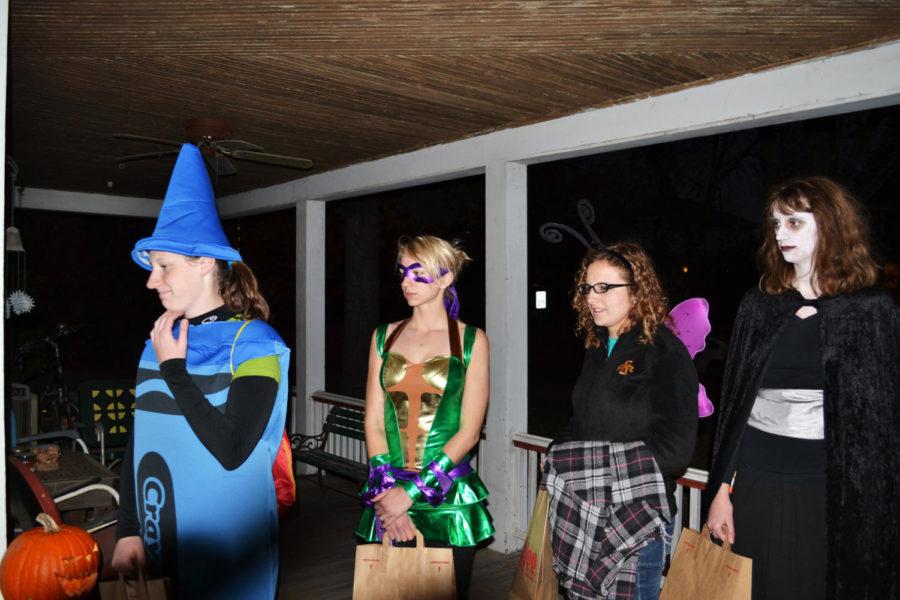Editorial: Don’t lose sight of Halloween traditions
Photo: David Babayev/Iowa State Daily
Emily Whitemarsh, freshman in engineering, Alex Burrett, freshman in animal science, Kelsey Schieltz, freshman in chemical engineering, and Vicky Pohlen, freshman in genetics, wait for young trick-or-treaters to fill up on candy.
October 30, 2014
Happy Halloween! While this phrase means that the holiday is upon us, it’s interesting to note that Halloween has not always been Halloween. The original holiday, All Hallow’s Eve, used to be celebrated by Celtic people more than 2,000 years ago. Today, Halloween is a day filled with dressing up as something spooky and getting candy, but Halloween has not always been known for this.
Samhain is the Celtic holiday that Halloween originated from. The Celts referred to the holiday as a day where the dead could walk among the living at the same time, and they were able to communicate with each other. Costumes came into play when the Celts wore ghoulish costumes so that the wandering spirits would mistake them as a spirit and leave them alone. Others would offer the spirits sweets or candy to please the spirits to protect their homes and families.
Jack-O-lanterns had different symbolism for different time frames. Medieval Britain said that “supplicants moved from door to door asking for food in return for a prayer for the dead,” and they would carry “hollowed-out turnip lanterns, whose candle connoted a soul trapped in purgatory.” While in North America Jack-O-lanterns were used to ward off evil spirits.
Over the years, media has changed the way people view Halloween. Now rather than fearing the evil spirits who return to walk among the living, people fear the scary movies that they watched earlier that night. Halloween has transferred into a commercial holiday, rather than representing the traditions that it once was based on.
For children, Halloween has become a holiday that is primarily about trick-or-treating and dressing up in costumes. The holiday, much like many others, is promoted by many stores to make money. The prices of candy on the nearing days of Halloween go up and costumes are yet another outfit that the children will only wear one day out of the year, and could very well grow out of before the next Halloween.
For adults the holiday has become one for parties, spending money to be scared and spooked in haunted houses, dressing up in costumes and going out to bars. However, in the Celtic origination of the holiday people would stay in their homes in fear that evil spirits would try to to enter their homes.
Halloween is not the only holiday that has evolved over time. Thanksgiving, Easter and Christmas have all become commercial holidays and have strayed from the original traditions that they were based upon.
Students ages 18-24 were born in the 1990s and have grown up celebrating holiday traditions in the commercial way. It is what we know. But it would be very interesting if we resorted back to the original traditions of holidays such as Halloween.
Holidays have been changed by the media and by stores so much over the years that some children may grow up in the future never knowing how Halloween originated and why it was really celebrated. Halloween today is about candy, costumes and being with friends and family. But 2,000 years ago we were scared to go outside for fear that an evil spirit may come upon us.
As we grow older, holidays will continue to evolve, but just like our culture and traditions that we hold dear, we should remember Halloween for what it really is, a day that the dead will walk among the earth.
“As spirits roam the neighborhoods at night,
Let loose upon the Earth till it be light…”
~Nicholas Gordon







